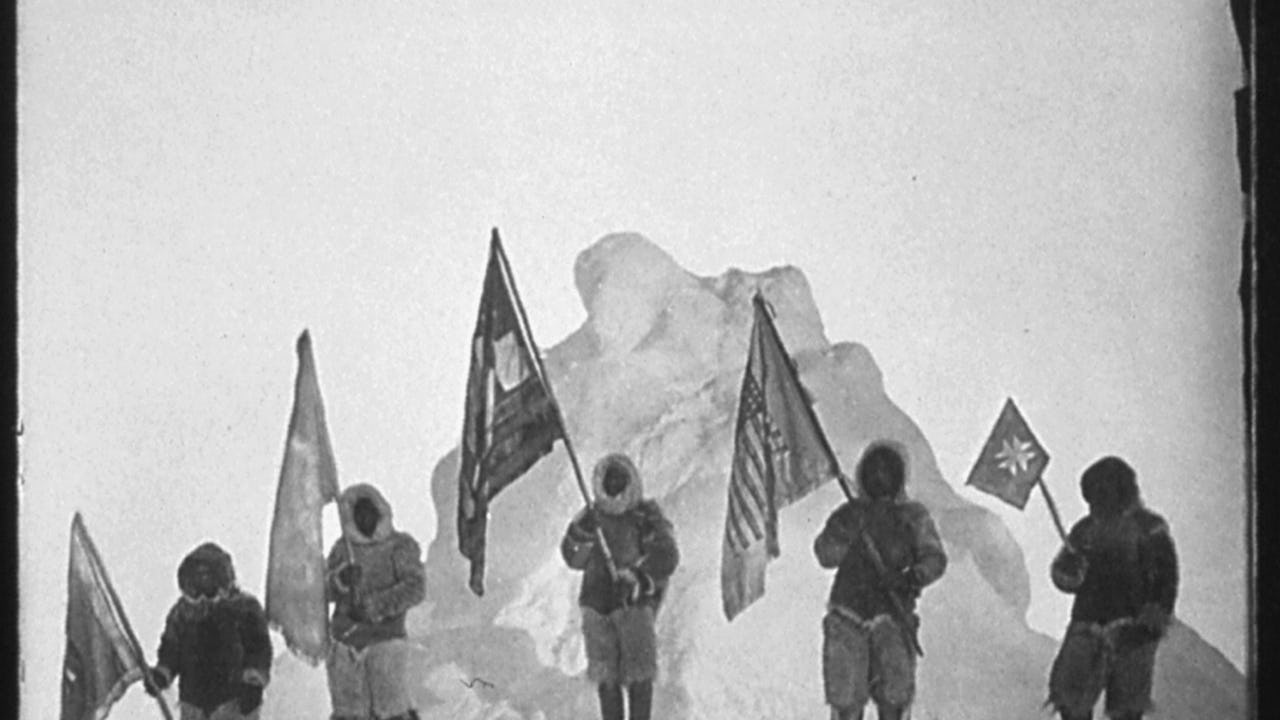The Arctic of Myth

The Arctic myth valorizes European and American explorers such as Robert Peary’s North Pole expedition. Photo: Archival Research Catalog
In 1869, W.A. Foster, an essayist and lawyer from Toronto, explained in the Toronto Globe that “The old Norse mythology, with its Thor hammers and Thor hammerings, appeals to us, for we are a Northern people, as the true out-crop of human nature, more manly, more real than the weak marrow-bones superstition of an effeminate south.”1) In his way, Foster was continuing a centuries old process of mythicizing the North that went hand in hand with European colonialism. The Arctic, as per this narrative, is a harsh, bleak, barren wasteland on the far-flung periphery of civilization. It is an empty canvas upon which (predominantly) European men could project their masculinity in service of empire or personal glory. The Indigenous peoples of these areas were either rendered as mere facets of the landscape or; alternatively, as savages living in a state of nature against which the entrepreneurial ingenuity of the pioneering European frontiersmen could be contrasted.2)
These images of the Arctic were, of course, not produced in the Arctic. These geographic imaginaries were the output of colonial administrators, artists, explorers, politicians, and writers based many thousands of kilometres to the south. The production of this mythic Arctic—one not grounded in the lived experiences of the North—finds important parallels today. In the visual arts, for example, the Arctic is often portrayed as a mythic, sublime landscape; beautiful yet cold and devoid of life, culture, and community. In literature and cinematography the trope of the Arctic as a savage, primal force found in Jack London’s Call of the Wild is alive and well today. To name but one example, this much is evidenced by the recent Netflix thriller, Hold the Dark, in which an unsettling and sinister vision of rural Alaska takes centre stage.
Beyond the arts, this tendency to project southern ideas of what the Arctic is (or should be) has crept in to policy discussions and academic debates. Headlines warn us of a neo-colonial scramble for northern resources while policymakers and academics debate whether or not cooperation or conflict will reign on the “frozen frontier.” This is dangerous. On one hand, it projects the interests and insecurities of the south onto a region where these concerns simply might not be relevant. The idea that Russia is going to steal the North Pole, or somehow invade Arctic North America, is an excellent example. As Canada’s then-chief of the Defence Staff explained in 2009, “If someone were to invade the Canadian Arctic, my first task would be to rescue them.”
Furthermore, by bringing this southern depiction of the Arctic northwards, there is the risk that the issues that matter to northerners (ranging from food security to improved infrastructure and job diversity) will be overlooked. The anti-sealing campaign spearheaded by Greenpeace, a campaign that ultimately ended up devastating the livelihoods of many Inuit hunters and artisans, is just one of many examples. There is also the danger that the dynamism and creativity of the North could be overshadowed. This would be a shame as, even within the last few decades, northerners have been at the vanguard of political innovation. The Arctic Council has proven that there is much gained by having Indigenous peoples at the table during international negotiations. On-going multilevel cooperation (involving coast guards, diplomats, academics, and to some extent militaries) between Russia and NATO members has ensured the region remains defined by cordial relations and respect for international law. At a sub-regional level, Arctic communities have developed and implemented remarkable new forms of governance including, for example, the territorial government in Nunavut which is a fusion of a Westminster parliamentary system and local Inuit values.
This is not an argument to throw out Call of the Wild or abandon the political trajectories of those in capitals from Ottawa to Oslo. The Arctic is more than ever before connected to, and affected by, what happens in the rest of the world. Keeping an eye on the larger picture is important. This is instead a reminder that the Arctic communities have both their own set of concerns relevant to their lived experiences, as well as their own unique and valuable perspectives on larger problems, such as climate change. It is also a reminder to avoid succumbing to the idea that the Arctic is a barren, empty, frontier wasteland. The Arctics—for there are many, something I have failed to adequately capture in this North American-centric account—are dynamic, vibrant, diverse, and innovative places. More than anything, Arctic communities are called home by more than four million—something that is all too often forgotten.
This article originally appeared in the Winter 2018 edition of the Royal Scottish Geographic Society magazine, The Geographer, accessible here.
References